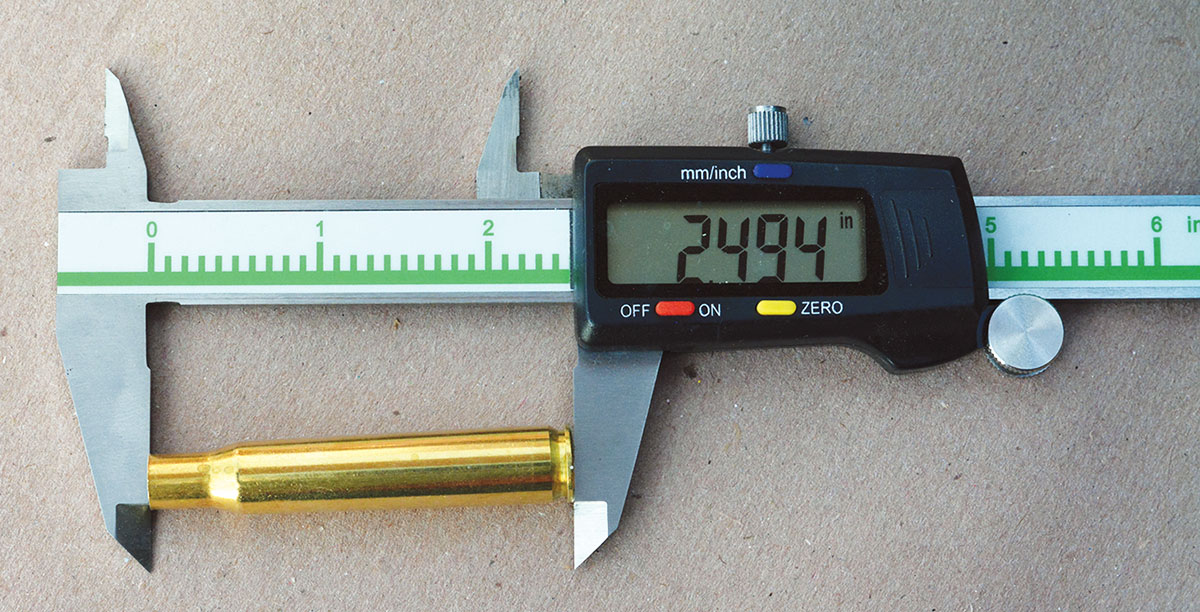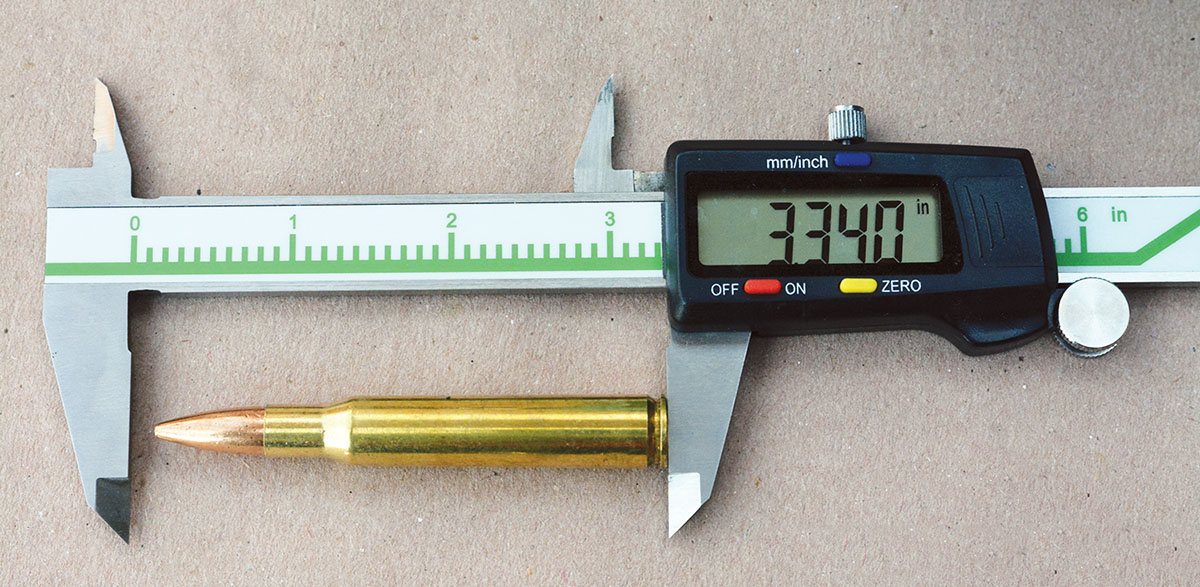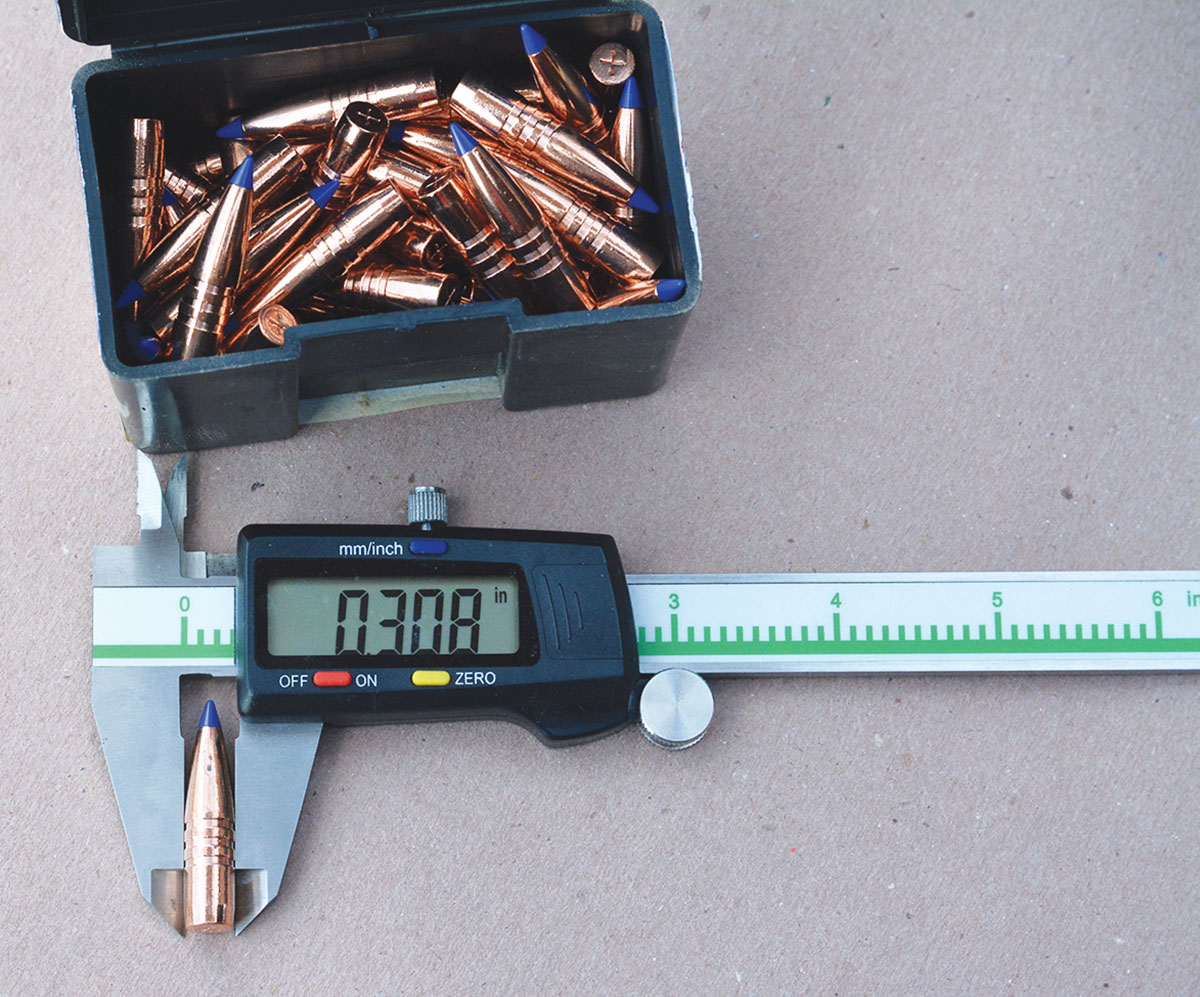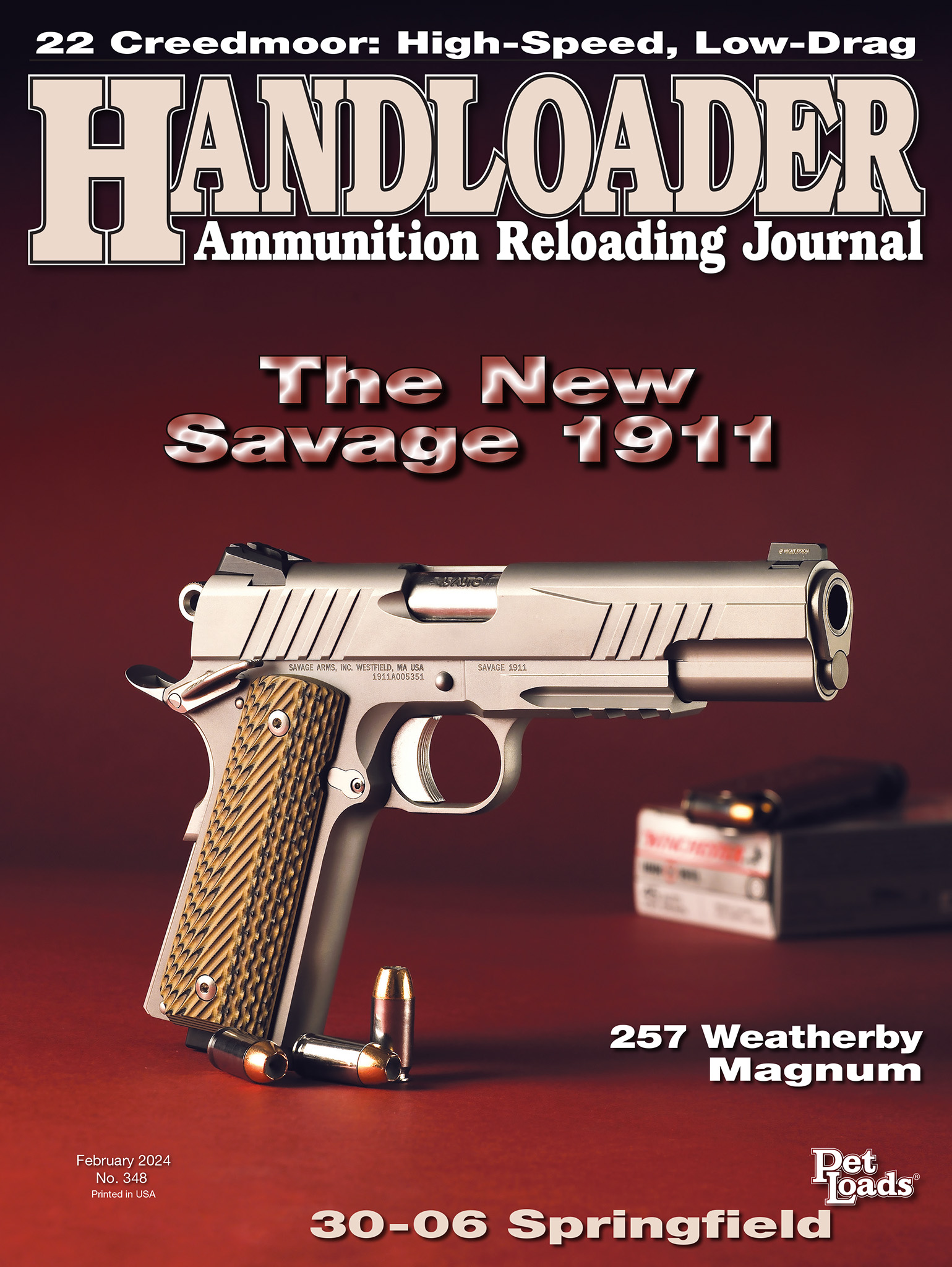30-06 Springfield (Pet Loads)
The Legacy Lives On
feature By: Brian Pearce | February, 24

The 30-40 Krag, or .30 U.S, was adopted by the military in 1892, and was its first attempt to change from traditional big bore, heavy-bullet cartridges such as the 45-70 Government to a modern smallbore cartridge designed for smokeless powders. Despite it being a good cartridge, for several reasons, there was a need for further improvement. While there were experiments with heavier bullets, by 1894, the standard military load contained a 220-grain metal jacketed roundnose bullet pushed to around 1,960 feet per second (fps) from 22-inch Krag-Jorgensen carbine barrels, or 2,000 fps from the 30-inch rifle using 40 grains of nitrocellulose powder.
Motivated to improve both the rifle and cartridge, the Springfield Model 1903 rifle was developed that was notably stronger (than the Krag rifle that featured a single locking lug) with twin locking lugs, along with the 30-45 cartridge, which was a .30 caliber with 45 grains of smokeless powder, but that cartridge became more commonly known as 30-03 Springfield to identify the year of development and adoption by the military. The new cartridge handled notably greater pressures. Like its predecessor, the 30-03 employed a 220-grain roundnose bullet, but velocity was bumped to 2,300 fps. In addition to offering greater powder capacity, the case was truly modern, as it was rimless (the 30-40 was rimmed) and featured an extracting groove cut, headspaced on the shoulder, was properly designed to accommodate smooth control round feeding (as well as modern rifles that are push-feed actions) and boasted of a strong head design.

The 30-03 still needed further improvement, which ultimately led to the development of the 30-06 Springfield in 1906, or what was officially known as “cartridge, ball, caliber .30, Model 1906” or often referenced as “M1906” but is most commonly referred to today by commercial ammunition manufacturers and the Sporting Arms and Ammunition Manufacturers’ Institute (SAAMI) as “30-06 Springfield.” However, many shooters affectionately refer to it as “06.” For today’s purposes, it is the 30-06.
The 30-06 was based on the excellent .30-03 case, but included shortening the case length from 2.540 to 2.494 inches, but it retained the same basic shoulder angle and overall cartridge length of 3.340 inches and the rifling twist rate remained the same at 1:10 inches. However, the bullet weight was dropped to 150 grains and featured a spitzer profile that is reported to have a ballistic coefficient (BC) of .405, while velocity was bumped to 2,700 fps using military rifle powder MR-21. These changes were truly modern and allowed the 30-06 to compete very favorably with other world military cartridges that were already using spitzer profile bullets and were much more effective at long range than the 30-40 Krag or .30-03 cartridges. (Note: It has often been stated that the 270 Winchester and 280 Remington cartridges are based on necked-down 30-06, however, they are actually necked-down .30-03 cases.)

Existing M1903 Springfield rifles had to be modified to accommodate the new 30-06 cartridge that included (among other things) setting the barrel back and then rechambering to accommodate the shorter case and shorten the chamber leade to limit bullet jump of the new spitzer profile bullet and achieve proper accuracy. As a result, the M1903 Springfield barrels were shortened by approximately .200 inch to around 24.006 inches for overall barrel length, while the chamber and bore length is 23.749 inches.
Almost immediately, sporting rifles were chambered for the 30-06 such as the Winchester Model 1895 lever action. However, modern U.S. bolt- action rifles were still in their infancy and it would take a little time before major manufacturers could offer proper bolt-action rifles. To meet the immediate demand from sportsmen and hunters, many custom gun shops of that era such as Sedgley, Griffin & Howe, DuBiel and others built some beautiful 30-06 rifles on 1903 Springfield, Mauser 98 and other actions that are highly sought after today. Remington was building the Model 1917 Enfield, but they began offering the commercial version Model 30 beginning in 1921, which was based on the same action, as well as the Model 720 series that was produced during World War II. By 1925, Winchester began offering the Model 54 and the Model 70 in 1935. Many foreign manufacturers recognized the virtues of the 30-06 and offered rifles for both foreign and U.S. sales.

During the post-World War II era, a flood of modern bolt-action rifles appeared from Remington, Ruger, Mossberg, Savage Weatherby and many foreign manufacturers from around the world. In addition to being chambered in the previously mentioned lever actions and bolt-action rifles, the 30-06 has been offered in modern lever -action designs such as the Browning BLR series, countless single shots, pump actions, autoloaders and straight pull actions.
Many popular gun writers from yesteryear were critical of the 30-06’s performance on game; however, in almost all instances they were using poor bullets, or were promoting more modern cartridges. I have used the 30-06 on a fair amount of game including antelope, black bear, whitetail deer, mule deer, elk, red stag, European boars, wild hogs, moose and many other types of game. By correctly matching bullets to the game being hunted and respecting reasonable limits, the 30-06 performs very well. Just briefly, I will mention that to date I have taken four head of moose with the 30-06 (each with a different premium big-game bullet) and each was taken cleanly with a single shot (including a running moose in Sweden). The same can be said of elk, deer, black bear and European boar. Antelope have been taken at nearly 500 yards using Nosler Ballistic Tip bullets with just a single shot and it worked perfectly.

Apparently, my experience is not unique, as the 30-06 has found great favor with hunters in the U.S. and around the world. It is essentially the standard by which other deer hunting cartridges are compared. But it is much more than a deer cartridge. With good bullets designed for heavier game, it has cleanly taken all species of North American game including moose, brown bear, polar bear and all species of African plains game. When loaded with high-BC bullets, it offers a flat enough trajectory to be effective for long-range shooting. It is a very accurate cartridge that has served our military well in sniper applications and has performed well in 1,000-yard competitions. It is comparatively easy on rifle barrels, offering long life. It offers moderate recoil in standard-weight rifles and is generally easy to master for most shooters. The shape of the cartridge, the modest shoulder angle and its 3.340-inch overall length facilitate reliable feeding in many rifle action types. It is so universal that ammunition can be found in the four corners of the world. In traveling overseas, many times I have been handed a borrowed rifle to hunt with, which saves all the headaches and paperwork associated with getting a firearm through customs and almost always, the caliber is 30-06! It is truly a universal cartridge around the world. As Townsend Whelen once indicated “The 30-06 is never a mistake.” In my opinion, those words still ring true as long as it is used within reasonable limits.

It seems important to clarify that the accompanying 30-06 Pet Loads data is for modern sporting rifles with any action type. However, they are not intended to be used in conjunction with the M1Garand rifle (and certain other military semiauto and fully-auto rifles). The M1 Garand is strong, but using loads intended for bolt-action rifles can damage operating rods and the Garand requires military-specification primers to prevent dangerous slamfires and other potential hazards. For suitable M1 Garand data, please see “Pet Loads for the M1 Garand” in Handloader No. 333 (August – September 2021). Another noteworthy comment is that the actions of many M1903 Springfield rifles were improperly heat-treated and are known to be dangerous with any ammunition. It is advised to research the serial number to be certain that it is not in the affected group of rifles prior to shooting.
Modern commercial 30-06 cases generally have greater capacity than military cases. As a result, a given handload that is safe in commercial cases will probably exhibit much greater pressure when assembled in military cases. It should be noted that U.S. military cases were corrosive primed until 1952, while the U.S. military declared the 30-06 obsolete in 1957 and military loads were discontinued soon thereafter. The point is that the vast majority of surplus U.S. cases were primed with corrosive primers and corrosion can weaken the case. It is suggested to start with modern commercial cases.

Case preparation is always critical to be happy with the end result, especially regarding bottleneck rifle cartridges. For example, the most common 30-06 die sets are sold with a full-length sizing die. These work fine when firing cartridges and developing loads for a given bolt-action rifle. However, often cases that have been fired in a variety of rifles may not chamber reliably in all rifles after being full-length sized. If cases have been fired in other rifles, or loaded cartridges will be fired in multiple rifles, a small-base sizing die is suggested and if handloaded cartridges are being used in lever actions, pump actions or auto-loading rifles, even if cases were fired in the same rifle that they are being reloaded for, it is likewise suggested to use a small-base sizing die. These actions don’t offer the same camming power as bolt guns and if cartridges are not fully within SAAMI specifications, they may not readily chamber when the action is closed. Neck-sizing dies are popular for shooters seeking top accuracy, but again, reloaded cases/cartridges should be fired repeatedly in the same rifle.
Case materials, heat-treating methods and capacity vary from one manufacturer to another. Capacity often varies by several grains (of water). For these reasons, mixing cases is not recommended, as pressures will vary, extreme spreads will grow and accuracy will suffer. Rather, it is suggested to always use cases from one manufacturer and preferably that is all the same lot number. Trimming cases to one length, uniform the flash holes, chamfering case mouth, weight sorting and other preparation items will yield increases in accuracy. For today’s purposes, both Starline and Hornady cases were used to develop Pet Loads data (naturally separated as mentioned in the footnotes).

The current industry maximum average pressure is 60,000 psi, but was formerly 50,000 CUP. Most of the handloads in the accompanying data have been pressure tested and are within those limits.
Throughout most of its existence, the 30-06 has been loaded with extruded powders that offer top-notch accuracy, reliability and are trusted under adverse temperatures. The 4350 powders from IMR, Hodgdon and Accurate are proven performers with virtually all bullet weights, but they generally perform best with weights ranging from 130 to 200 grains. Other notable extruded powders include Hodgdon H-322, Varget, H-4895, H-4831, H-4831SC, H-1000, IMR-4064, IMR-4451, IMR-4320, IMR-4831, Accurate A-2495, Vihtavuori N-140, VV N-150, VV N-160, Alliant RL-15, RL-17, RL-19 and others.


To develop handload data, a Ruger M77RS Mark II was selected with a 22-inch barrel, which is by far the most popular barrel length with sporting rifles chambered in 30-06. This particular rifle has proven accurate with carefully tailored handloads producing sub ½-inch, four-shot groups at 100 yards. Like always, the Ruger action is ultra-reliable, which is important when firing as many rounds as was required to develop the accompanying Pet Loads data.
The 30-06 is a truly versatile and remarkable cartridge that has achieved long-lasting popularity that few cartridges can match and with improved powders and bullets, it’s better than ever.

.jpg)
.jpg)
.jpg)
.jpg)
.jpg)


